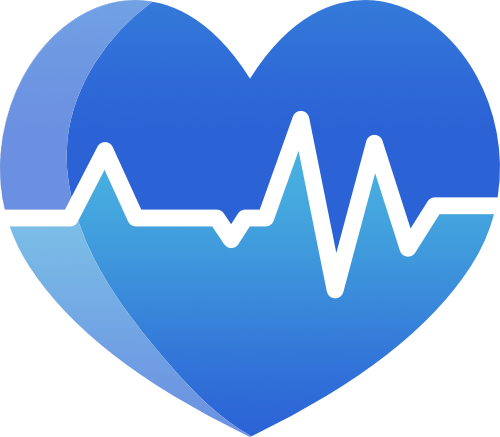Atherosclerosis of the Brain and Upper Extremity Vessels
Atherosclerosis of the cerebral vessels is a slow-progressing pathology that arises from disturbances in fat metabolism. The disease is caused by the gradual buildup of fatty plaques on the walls of blood vessels. Over time, these plaques enlarge. Gradually, they are replaced by connective tissue. The vessel's channel begins to narrow, which impairs its conductivity. From this point on, brain cells experience an acute shortage of oxygen and nutrients.
The causes of the pathology's development include factors such as:
Additionally, atherosclerosis can develop due to constant stress and emotional instability.
Atherosclerosis is classified as follows:
There is also Menkeberg's pathology – the accumulation of calcium salts in the arterial wall.
Etiology of Atherosclerosis
The causes of the pathology's development include factors such as:
- Heredity: if someone in the family has been diagnosed with a fat metabolism disorder;
- Overweight and improper diet;
- Lack of physical activity;
- Bad habits;
- Presence of chronic conditions (high blood pressure, diabetes).
Additionally, atherosclerosis can develop due to constant stress and emotional instability.
Types of Atherosclerosis
Atherosclerosis is classified as follows:
- Age-related;
- Metabolic;
- Toxic;
- Infectious;
- Cerebral;
- Caused by allergic manifestations.
There is also Menkeberg's pathology – the accumulation of calcium salts in the arterial wall.
Schedule a Consultation
Diagnosis of the Pathology
The diagnosis of this disease is handled by a specialized neurologist. During the appointment, the doctor collects patient data, studies the medical history, and tests the patient. A person with atherosclerosis will show deviations from positive results in the proposed tests:
- A simple request from the doctor to look up will cause difficulties (if the person is sick, they will not be able to do this).
- The patient's reflexes will not correspond to the norm (in the presence of a pathological condition, they are either above the norm or significantly reduced. Asymmetry of movements is observed).
- A test based on extending the arms will indicate the presence or absence of tremor, as well as whether coordination is impaired.
- The request to touch the tip of the nose with a finger will not be fulfilled; with atherosclerosis, this is impossible.
Visual examination of the patient is the first part of the diagnosis. Next, the specialist will refer the patient for additional examinations, which include the following:
- Consultation with an otolaryngologist, ophthalmologist, and other specialists depending on the symptoms.
- Laboratory blood tests and lipid profile determination.
- Instrumental diagnostics if necessary.
Instrumental examination methods are prescribed when indicated. These can include:
- Ultrasound examination of the brain and neck using two-dimensional or duplex scanning.
- Vascular angiography.
- Ultrasound Dopplerography.
- MRI of the brain vessels.
- Radio and electroencephalogram.
- Computed tomography.
Today, a pathology like atherosclerosis is diagnosed thanks to accurate, modern equipment, which greatly facilitates the task of making an adequate diagnosis.
Therapy of the Pathology
The treatment of people diagnosed with atherosclerosis is not handled by a neurologist alone. This disease requires a comprehensive approach involving specialists from different fields. Only therapy based on a set of measures helps solve the problem not only qualitatively but also comfortably for the patient. In this case, the person quickly returns to their usual rhythm of life.
The basis of the therapeutic complex is the formulation of a proper diet: on one hand, it is dietary nutrition with a full menu combined with an individual physical activity program. On the other hand, treatment is based on medications that restore the body's impaired functions and reduce the pathological impact of the disease.
Medicines include:
- Diuretic-based drugs.
- Medications that normalize lipid levels.
- Vitamin complexes.
- Drugs that improve blood circulation in the brain.
- Medications that normalize blood pressure and heart rate.
- Thrombolytics.
Of course, this is not the entire list of medications. The necessary therapy is selected by a neurologist, taking into account the patient's medical history.
Preventive Measures
Preventive measures that help reduce the risk of atherosclerosis include:
- Giving up bad habits.
- Balanced diet.
- Weight correction and maintenance.
- Monitoring lipid levels and regularly testing blood glucose levels.
At the consultation, the attending physician can develop a preventive plan together with the patient. Prevention will be most effective if its methods are based on laboratory test results. The doctor can guide the patient and create an individual health monitoring plan.


SCHEDULE AN APPOINTMENT
Call us to schedule an appointment.
Mon-Fri 08:00 - 21:00,
Sat 09:00 - 20:00, Sun 09:00 - 18:00
Sat 09:00 - 20:00, Sun 09:00 - 18:00

CONTACTS
Rudenko Boris Alexandrovich
Consults at the Scandinavian Health Center - a multidisciplinary medical center
www.scz.ru
Moscow, 2nd Kabelnaya Street, 2, buildings 25, 26, and 37
+7 (495) 103-99-50
Mon-Fri 08:00 - 20:00,
Sat 09:00 - 15:00, Sun – Closed
Consults at the Scandinavian Health Center - a multidisciplinary medical center
www.scz.ru
Moscow, 2nd Kabelnaya Street, 2, buildings 25, 26, and 37
+7 (495) 103-99-50
Mon-Fri 08:00 - 20:00,
Sat 09:00 - 15:00, Sun – Closed
© 2024 All rights reserved.
All photos and texts are intellectual property and may be used/copied only with the author's credit and an active link to this website.
This website is for informational purposes only and under no circumstances constitutes a public offer as defined by Part 2 of Article 437 of the Civil Code of the Russian Federation.
All photos and texts are intellectual property and may be used/copied only with the author's credit and an active link to this website.
This website is for informational purposes only and under no circumstances constitutes a public offer as defined by Part 2 of Article 437 of the Civil Code of the Russian Federation.



